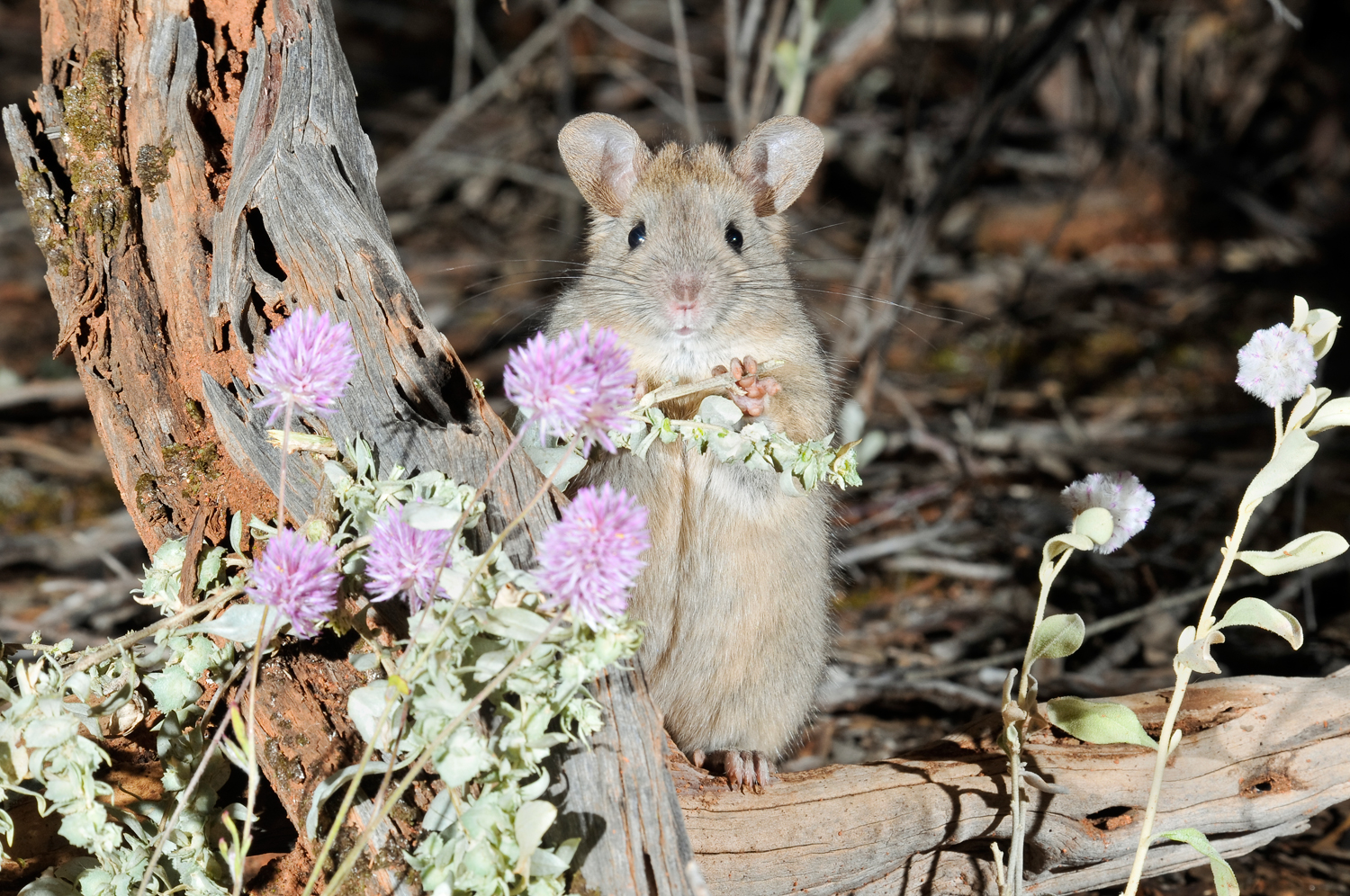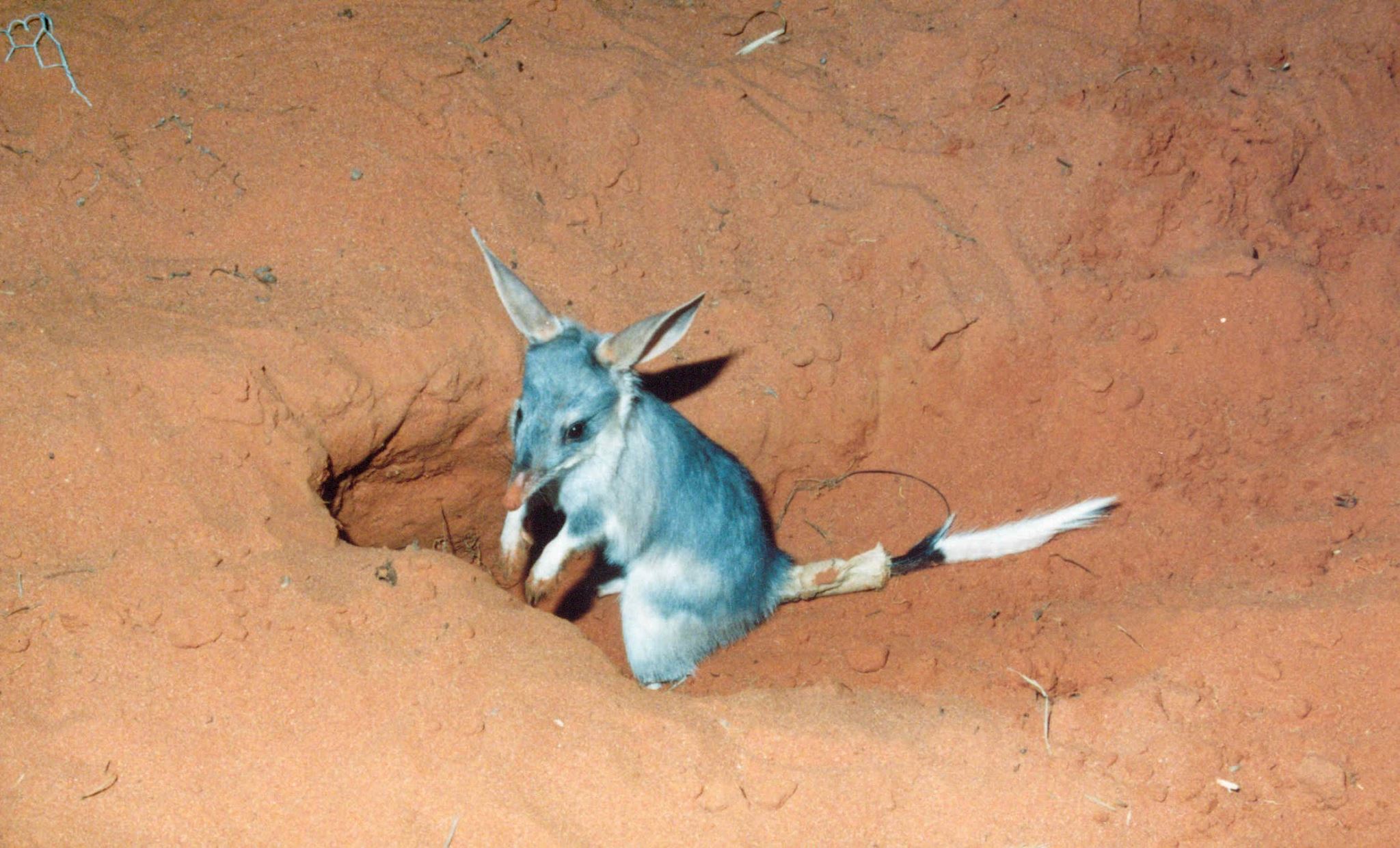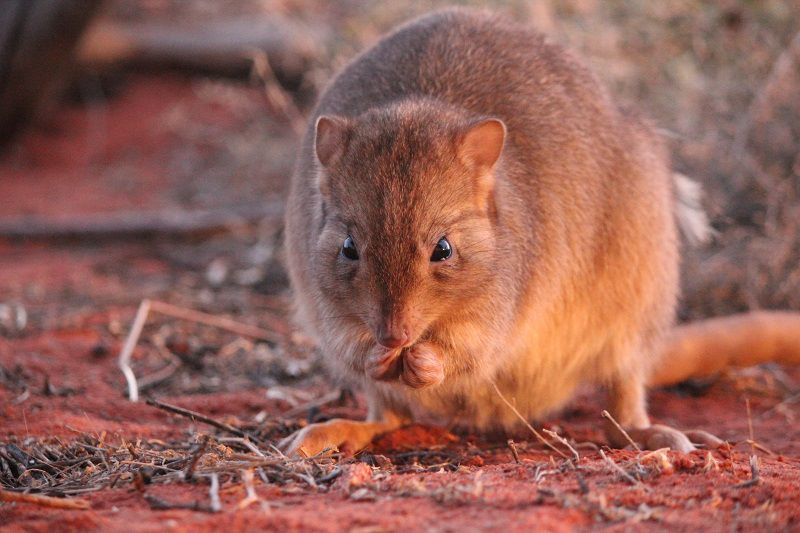
What was once a nocturnal hive of activity has sadly become too quiet. For thousands of years, regional South Australia was a thriving homeland to native mammals, such as bettongs and bilbies, burrowing their noses into the earth. Devastatingly, the impact of introduced foreign animals - particularly feral cats - has contributed to their demise.
With temperatures exceeding 45 degrees Celsius during the day, the South Australian outback can be a harsh place to live. However, native animals can thrive in the environment. Nesting deep under-ground during the day to keep out of the sun, bilbies come out at night to forage using their acute sense of smell and hearing. Unfortunately, so do feral cats.
There are as many as six million feral cats in Australia. There is also a considerable difference between a feral cat and a domestic moggy. Feral cats want little to do with humans – they live and breed in the wild and can prey on up to 20 native animals each night.
At least 27 species of native mammals once inhabited the South Australian outback, but over 60% have become locally or completely extinct since European settlement.
Arid Recovery have successfully reintroduced four native species to outback South Australia within their 123km2 fenced reserve, located 20km north of Roxby Downs, and run a number of native wildlife conservation projects.
In 2006 and 2008 Arid Recovery attempted to release burrowing bettongs and bilbies into the wild outside of the predator proof fence. Sadly within 19 months all of the released animals had been killed, largely by feral cats.
“We need to find new ways to ensure these incredible little ecosystem engineers can thrive and survive in the wild because their ability to rejuvenate the natural environment is rather amazing,” says Dr Katherine Tuft, General Manager of Arid Recovery.
“Due to the ways in which bettongs and bilbies dig to build burrows and search for food, they actually allow the soil to absorb more nitrogen and carbon which is extremely beneficial for natural flora and fauna.”
The foraging behaviour of animals like bettongs and bilbies can turn over around three tonnes of earth per animal per year, with Australian plants thriving in the rich soil created. This in turn supports a rich environment of resources and habitats for native species and ultimately helps to undo some of the damage done to the land during early European settlement. Their wellbeing is of great concern to scientists and conservationists such as Dr Tuft.

The reserve has experienced much success since it was established in 1997 but there is an ongoing threat from the feral cats and foxes roaming outside. The reserve’s fence is not indestructible, particularly in extreme weather events, and its perimeter must be regularly patrolled by volunteer shooters to deter cats and foxes from finding a way inside.
Cats have infiltrated the reserve on three occasions over 20 years despite the trapping, baiting and shooting techniques in place. When a cat does get inside the reserve it can take weeks - if not months - to find and trap the cat. Within that time certain species, such as the endangered Greater Stick-nest Rat (pictured), are particularly vulnerable and could be wiped out by one cat.
“The holy grail of wildlife conservation is the successful rewilding of animals because fences can’t be maintained forever,” said Dr Tuft.
Dr Anton Blencowe, Senior Lecturer in Chemistry at the University of South Australia, and Dr David Peacock, a passionate conservation biologist, are leading a crowdfunding campaign to kickstart a novel approach to controlling feral predators in conservation efforts.
The researchers have developed a tiny capsule of poison derived from a family of native flowering plants called Gastrolobium or ‘poison peas,’ with a special polymer coating. The capsule can be inserted under the skin of reintroduced native wildlife, similar to a microchip, which lies dormant unless they are killed and eaten by a predator such as a feral cat.
“For every native animal that is unfortunately attacked and eaten by a cat, hundreds of other native animals will be saved thanks to the implant,” says Dr Blencowe.
This approach was suggested by Dr Peacock who has extensively researched the plant’s capabilities as a feral cat control to protect vulnerable reintroduced species. Through academic sources and historical records he found that the plant offers a number of ways to protect native wildlife.
“Many Australian native animals have a much higher tolerance to the poison from regular exposure over thousands of years (e.g. 2-3 mg to kill a fox or cat and 200 mg to kill a bettong). When the animals feed on the plants they themselves can become poisonous to introduced predators,” says Dr Peacock.
This approach has the unique advantage of not killing native predators due to the use of this natural poison and the size of the dose. It also does not harm the ecosystem if the animal dies of natural causes, simply degrading back into the earth uneaten.
“Australia has one of the most incredible and diverse ecological systems in the world with thousands of species endemic to our country. Unfortunately we also have the highest rate of mammal extinction and we desperately need new ways to protect them,” said Dr Peacock.
“Having this new feral predator control method could give native animals that edge they need to survive outside of fenced reserves,’ says Dr Tuft.
Dr Tuft and her team at Arid Recovery have put their hands up to be one of the first conservation groups to trial the new approach to saving native species from feral predators.
The conservation team are particularly interested in testing if UniSA’s new approach will allow burrowing bettongs and bilbies to survive in the wilderness surrounding the reserve.
“We need smart animal control methods to ensure the impact of feral predators is reduced and our native animals can restore some balance to their environments,” says Dr Katherine Tuft.
For more information and details on how to make a donation to the appeal please visit:
www.chuffed.org/project/save-aussie-animals.
The University of South Australia has committed to boost donations by an extra 20% - but only if the project target of $30,000 is achieved, so please get behind this campaign and share it with your friends.
 Burrowing Bettong photo courtesy of Arid Recovery
Burrowing Bettong photo courtesy of Arid Recovery
Dr Anton Blencowe, University of South Australia, has engineered a tiny capsule, the size of a grain of rice, which may hold the answer for protecting precious endangered animals from feral predators. UniSA is crowdfunding to further develop, test and trial this new technology to give native species the edge they need to survive in the wild.
Big things can happen when we all work together. Crowdfunding@UniSA gives you the opportunity to engage directly with innovative research projects and follow their progress as our researchers work to tackle important issues. The first three projects open for your support aim to improve our health, society and the environment. For the campaigns that reach their targets, the University of South Australia has committed to boosting all funds raised by an extra 20% - so your dollar will have even greater impact.
